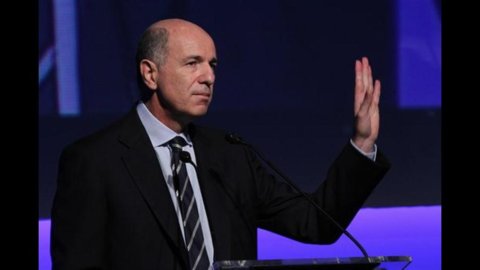The Gagosian stand set up at Paris Photo includes photography and multimedia works by Richard Avedon, Brigid Berlin, Nat Finkelstein, Douglas Gordon, Michael Halsband, Ray Johnson, Peter Lindbergh, Gerard Malanga, Robert Mapplethorpe, David McCabe and Duane Michals, as well as Warhol himself.
By echoing and embracing the commodification of art and fashion, Warhol effectively blurred the lines between his art, his life and his media representations. In his paintings, photographs and films, he not only depicted famous people, but he also created them, forming a community of “Superstar” who have straddled the boundaries of gender, sexuality, notoriety and fame.
The superstar-socialites, artists, and other local personalities made famous by their proximity to Warhol often gathered at Warhol's studio, known as the Factory, which had three different locations between 1963 and 1987. The first, located at 231 East 47th Street in midtown Manhattan is often referred to as the Silver Factory, as it was completely lined with tin sheets and mirrors – a glittering interior fitting for Warhol's legendary parties and artistic innovations. In 1968, Warhol moved the factory to 33 Union Square West, near Max's Kansas City, a club he and his cohort often visited; and in 1974 moved around the corner from 860 Broadway to the north end of Union Square.
Gagosian's presentation offers an expansive look at the factory and the social life it engendered. Warhol's photographs portray a cast of desirable characters, including Jean-Michel Basquiat, Keith Haring, Debbie Harry, Bianca Jagger, Grace Jones, Paloma Picasso, Diana Ross and André Leon Talley, as well as marble statues and skyscrapers. Malanga shows Warhol with the Velvet Underground and Nico, Patti Smith and Robert Mapplethorpe, and superstar Candy Darling undresses in a black dress.
Warhol and Basquiat's infamous images of Halsband with boxing gloves contrast with McCabe's photos of more candid moments: Warhol lights up Edie Sedgwick's cigarette, works on a painting, or stands in an elevator. Avedon focuses his lens on Warhol's bare torso as the artist reveals the visceral scars of his attack on Valerie Solanas, while Lindbergh captures silent views of Warhol's secluded Montauk home. Gordon's Self-Portrait of You + Me (2 pieces Andy) (2008) comprises two burnt reproductions of Warhol's wig self-portraits, applied to a mirrored surface so that the viewer is reflected between the disintegrated images.
In many respects, the factory functioned as a work of art in and of itself, prefiguring the socially driven participatory spaces created by artists today. Looking back at the countless angles from which Warhol's life and studio activities were documented in photographs, the viewer can perceive the seeds of a media-saturated present in the mythic and compelling world of the ultimate pop artist.





